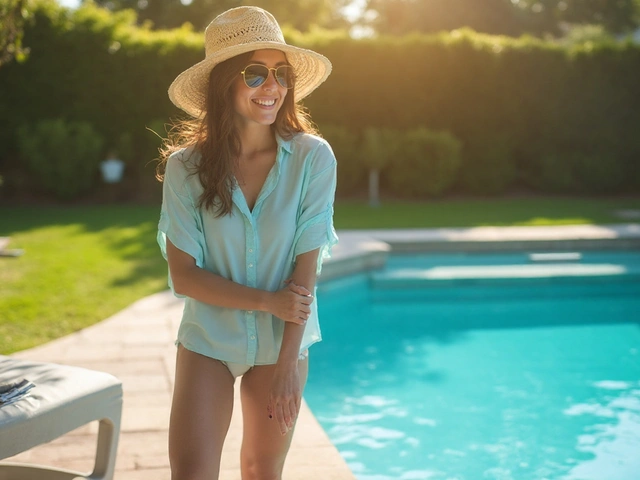Quick Takeaways
- Heart failure is split into four ACC/AHA stages (A‑D) that track disease progression.
- Each stage lines up loosely with the NYHA functional classes (I‑IV) that describe symptom severity.
- Diagnosis relies on echo measurements, blood tests, and symptom review.
- Treatment starts with lifestyle tweaks and medication, then moves to devices or surgery in later stages.
- Knowing your stage helps you and your doctor plan the right interventions and avoid emergencies.
When doctors talk about congestive heart failure is a condition where the heart cannot pump blood efficiently, causing fluid to build up in the lungs, legs, and abdomen, they often break it down into stages. Understanding those stages is the first step to taking control of your health, asking the right questions, and catching problems before they become emergencies.
What Is Congestive Heart Failure?
At its core, congestive heart failure (CHF) is the heart’s inability to meet the body’s demand for blood and oxygen. The most common culprits are high blood pressure, coronary artery disease, and valve disorders. Over time, the heart muscle thins, stretches, or stiffens, which reduces the ejection fraction (EF)-the percentage of blood pumped out of the left ventriving chamber with each beat. Normal EF sits around 55‑70%; values below 40% usually signal systolic failure, while a preserved EF with high filling pressures points to diastolic failure.
The ACC/AHA Staging System
The American College of Cardiology and the American Heart Association (ACC/AHA) created a four‑stage framework that mirrors the disease’s pathophysiology rather than just symptoms. Here’s how each stage breaks down:
- Stage A - At Risk: No structural heart disease yet, but risk factors are present (e.g., hypertension, diabetes, a family history of heart disease). Lifestyle changes and preventive meds are the main tools.
- Stage B - Structural Damage: The heart shows abnormal imaging (like left‑ventricular hypertrophy or a prior myocardial infarction) but the patient feels fine. ACE inhibitors or ARBs, beta‑blockers, and statins become standard.
- Stage C - Symptomatic: Classic heart‑failure signs appear-shortness of breath on exertion, swelling, fatigue. Treatment expands to include diuretics, aldosterone antagonists, and possibly device therapy.
- Stage D - Advanced: Refractory symptoms despite maximal medical therapy. Options include heart‑transplant evaluation, ventricular assist devices, or palliative care.
These stages are cumulative; you can’t skip from A to C without passing through B. The key benefit is that clinicians can intervene early-once you’re in Stage B, medications can slow or even reverse remodeling.
NYHA Functional Classification
While the ACC/AHA stages look at heart structure, the New York Heart Association (NYHA) system grades how a patient feels during daily activity. It’s a four‑class scale:
- Class I: No limitation; ordinary activity doesn’t cause symptoms.
- Class II: Slight limitation; comfortable at rest, but ordinary activity brings fatigue, palpitations, or shortness of breath.
- Class III: Marked limitation; less‑than‑ordinary activity leads to symptoms.
- Class IV: Inability to carry out any physical activity without discomfort; symptoms may be present even at rest.
The NYHA class helps doctors decide when to upgrade medication, add devices, or consider advanced therapies.
Stage vs. Class: A Quick Comparison
| ACC/AHA Stage | Typical NYHA Class | Main Therapeutic Focus | Key Diagnostic Tools |
|---|---|---|---|
| Stage A | Class I | Risk‑factor control, lifestyle, low‑dose ACE‑I/ARB | Blood pressure, lipid profile, fasting glucose |
| Stage B | Class I-II | ACE‑I/ARB, beta‑blocker, statin, cardiac rehab | Echocardiogram (EF, wall thickness), stress test |
| Stage C | Class II-IV | Diuretics, aldosterone antagonist, device therapy (ICD/CRT) | BNP/NT‑proBNP, repeat echo, cardiopulmonary exercise test |
| Stage D | Class III-IV (often IV) | Advanced therapies - LVAD, transplant, palliative care | Hemodynamic catheterization, right‑heart cath |
Notice the overlap: a person in Stage B may feel perfectly fine (Class I), but imaging already shows remodeling. That’s why the staged approach is a better early‑warning system.

How Doctors Diagnose Each Stage
Diagnosis is a blend of history, physical exam, and objective tests.
- History & Symptoms: Dyspnea, orthopnea, paroxysmal nocturnal dyspnea, edema, fatigue.
- Physical Exam: Jugular venous distention, crackles on lung auscultation, displaced apical impulse, peripheral edema.
- Blood Tests: B‑type natriuretic peptide (BNP) or NT‑proBNP rise as pressure builds in the heart.
- Echocardiography: Gold‑standard for measuring left‑ventricular ejection fraction, wall motion, valve function, and diastolic filling patterns.
- Stress Testing & Cardiac MRI: Used when coronary artery disease is suspected or when echo images are suboptimal.
- Advanced Hemodynamics: Right‑heart catheterization in Stage D to assess pulmonary pressures and response to vasodilators.
By combining these data points, clinicians can pinpoint where you sit on the ACC/AHA ladder and NYHA ladder.
Treatment Options by Stage
Therapy evolves as the disease progresses. Below is a snapshot of the most common interventions per stage.
- Stage A
- Blood‑pressure control (often with ACE inhibitors or ARBs).
- Lipid‑lowering therapy (statins).
- Smoking cessation, weight management, regular aerobic activity.
- Stage B
- Continue ACE‑I/ARB, add a beta‑blocker if tolerated.
- Manage diabetes aggressively; consider SGLT2 inhibitors for their cardio‑protective effects.
- Enroll in a cardiac rehabilitation program.
- Stage C
- Loop diuretics (furosemide) to relieve congestion.
- Aldosterone antagonists (spironolactone) to reduce remodeling.
- Consider implantable cardioverter‑defibrillator (ICD) if EF ≤35% and risk of sudden death is high.
- Cardiac resynchronization therapy (CRT) for patients with wide QRS complexes.
- Stage D
- Advanced mechanical support: left‑ventricular assist device (LVAD) or total artificial heart.
- Evaluation for heart transplantation.
- Palliative care to manage symptoms, minimize hospitalizations, and improve quality of life.
Medication choices are guided by large trials-like the PARADIGM‑HF study for sacubitril/valsartan-and personalized based on kidney function, blood pressure, and tolerance.
Lifestyle Adjustments That Matter
Even with high‑tech therapies, daily habits still shape outcomes.
- Low‑Sodium Diet: Aim for under 2grams of salt per day. That’s roughly one teaspoon.
- Fluid Restriction: In Stage C/D, many clinicians limit intake to 1.5‑2L per day to avoid volume overload.
- Exercise: Tailored aerobic activity (e.g., walking, stationary cycling) for 150minutes a week improves EF and NYHA class.
- Weight Monitoring: A sudden gain of >2kg in 24hours often signals fluid retention.
- Medication Adherence: Skipping an ACE‑I or diuretic can cause rapid decompensation.
Think of lifestyle as the ‘maintenance crew’ that keeps the heart’s plumbing from clogging.
When to Call Emergency Services
Heart failure can swing from stable to critical in hours. Call 999 (or your local emergency number) if you notice:
- Sudden, severe shortness of breath that won’t improve with rest.
- Chest pain or pressure that feels different from usual angina.
- Rapid weight gain (>3kg) plus swelling in the abdomen.
- Palpitations accompanied by dizziness or fainting.
- Rapid breathing (over 30 breaths per minute) or a bluish tint around the lips.
Early treatment in the ER-often intravenous diuretics and oxygen-can prevent a full‑blown cardiac arrest.
Putting It All Together: Your Personal Roadmap
Knowing your stage and class gives you a clear roadmap:
- Ask your cardiologist for the exact ACC/AHA stage. Request the latest echo report to see EF.
- Record daily symptoms. A simple diary of breathlessness and weight helps track progression.
- Review medications every 3‑6 months. Adjust doses based on blood pressure, kidney labs, and symptom control.
- Adopt the low‑sodium, fluid‑aware diet. Cook at home, use herbs instead of salt.
- Schedule cardiac rehab. Supervised exercise reduces rehospitalization by up to 30%.
- Plan for the future. Discuss device eligibility or transplant options early, not when you’re already in crisis.
By staying proactive, you shift the game from “what can happen next?” to “how can I keep thriving?”

Frequently Asked Questions
Can I be in Stage B but feel completely fine?
Yes. Stage B means structural changes are present on imaging, even if you have no symptoms. Early medication can slow remodeling before you notice any shortness of breath.
How does NYHA class differ from ACC/AHA stage?
NYHA class grades how a patient feels during activity, while ACC/AHA stage reflects the underlying heart damage. A person can be Stage C (structural damage with symptoms) but still be NYHA Class II if they manage activity well.
When should I start using a home blood‑pressure monitor?
If you’re in Stage A-B, monitoring at least once a day helps you and your doctor adjust ACE‑I/ARB doses before pressure spikes cause remodeling.
Are diuretics safe for long‑term use?
They’re safe when kidney function and electrolytes are checked regularly. Most patients on loop diuretics need periodic blood tests to avoid low potassium or worsening kidney function.
What lifestyle change has the biggest impact?
Cutting sodium below 2grams per day and maintaining a regular, moderate‑intensity exercise program each week together reduce hospital admissions more than any single medication.
Understanding congestive heart failure stages isn’t just medical trivia-it’s the foundation for staying active, avoiding crises, and planning a future that feels within reach.




Comments
11 Comments
pooja shukla
Listen up, fellow Indians – the heart‑failure staging system isn’t some foreign jargon, it’s right here in our textbooks and we’ve been crushing it for years. Stage A is just the warning sign, so if you’ve got hypertension or diabetes, hit the gym, ditch the fried food, and grab an ACE‑I before the heart even thinks about giving up. Stage B already shows the heart scarred on an echo, but you still feel fine – that’s when you start beta‑blockers and keep the cholesterol low. Don’t wait for the cough and swelling; act now and you’ll beat the stats that the West loves to brag about.
Alan Whittaker
The pharmaceutical oligarchy deliberately muddies the ACC/AHA staging narrative to keep patients hooked on patented combos. Notice how the guidelines sprinkle “ACE‑I/ARB” every other sentence – a cue to push multi‑pill regimens that lock you into a profit loop. Meanwhile, the underlying hemodynamic metrics like cardiac output and pulmonary capillary wedge pressure get glossed over, obscuring the true physiologic picture. Only a deep dive into raw invasive cath data can expose the real trajectory, bypassing the “soft” echo numbers that are engineered for marketability. Moreover, the NYHA class is a subjective symptom checklist that the industry uses to justify higher‑priced devices, such as CRT and LVAD, under the guise of improving quality of life. In reality, those devices inflate procedure volume statistics for hospital rankings, which in turn attract more research funding funneled back to the same drug manufacturers. Connect the dots and you’ll see the staged escalation is a carefully orchestrated funnel, not a purely scientific pathway.
Michael Waddington
Look, the whole “stage ladder” is just a slick sales script. Docs love to slap a label on you and then hand you a new pill every visit. If you’re not too lazy to read the fine print, you’ll see half the meds have the same mechanism of action, just rebranded. Bottom line: don’t let them turn your heart condition into a never‑ending pharmacy invoice.
Aditya Satria
Great points about early intervention – catching structural changes in Stage B can really shift the prognosis. It’s also worth noting that regular monitoring of blood pressure and lipid panels provides the quantitative feedback needed to fine‑tune ACE‑I or ARB dosages before any symptomatic decline. Combining that with a structured cardiac rehab program often improves ejection fraction by several points, which directly translates to better NYHA class outcomes. So, proactive labs plus lifestyle tweaks are the real power combo here.
Jocelyn Hansen
Absolutely!!! 🎉 Staying on top of those labs is like having a GPS for your heart – you always know when you’re veering off course!!! Keep that low‑sodium diet 🥗, stick to your meds, and don’t forget to log your daily weight – a quick 2‑kg jump is a red flag!!! You’ve got this!!💪
rahul s
Yo, anyone thinking the American guidelines are the only gospel? Nah, Indian cardiology has been pioneering low‑dose ACE‑I protocols since the early 2000s, and our patients are living longer with fewer pills. We mix Ayurvedic diet principles with evidence‑based medicine – that’s why our hypertension control rates are climbing faster than the West can copy. So before you chase the latest gadget, remember that disciplined lifestyle and affordable generics beat a shiny LVAD any day.
Julie Sook-Man Chan
That's a solid reminder that cheap generics can outshine pricey tech.
Amanda Mooney
Indeed, integrating culturally appropriate dietary advice with guideline‑directed therapy creates a synergistic effect that enhances patient adherence. Studies from South Asian cohorts demonstrate that when dietary counseling respects traditional meals, sodium intake drops significantly, leading to measurable improvements in NYHA class. Moreover, the cost‑effectiveness of such an approach aligns with health‑system sustainability goals. Keep championing that hybrid model!
Mandie Scrivens
Oh sure, because everyone loves swapping a life‑saving LVAD for a plate of dal and rice.
Natasha Beynon
Well said! The data clearly show that culturally tailored counseling reduces hospital readmissions. It’s also encouraging to see clinicians emphasizing both pharmacologic and lifestyle strategies in tandem.
Cinder Rothschild
When you look at the big picture of heart failure management you see a tapestry of interventions that stretch from the kitchen to the cath lab. The first thread is always diet and fluid control. Cutting sodium below two grams per day tells the kidneys to excrete less water. This alone can keep a patient out of the emergency department for months. The next thread is medication adherence. Taking ACE inhibitors as prescribed reshapes the heart muscle over time. Beta blockers calm the nervous system and lower heart rate. Diuretics flush excess fluid when congestion appears. Aldosterone antagonists block harmful hormone pathways. Each of these pills has a clear mechanistic role. Then you add devices for those who need them. An ICD watches for dangerous rhythms and can shock the heart back to safety. CRT can synchronize the ventricles and improve pumping efficiency. For the most advanced cases a left ventricular assist device buys time. Finally transplantation remains the ultimate option for a truly exhausted heart. All of these steps are linked together by regular follow up visits and lab checks that guide dosage tweaks and early detection of problems.
Write a comment